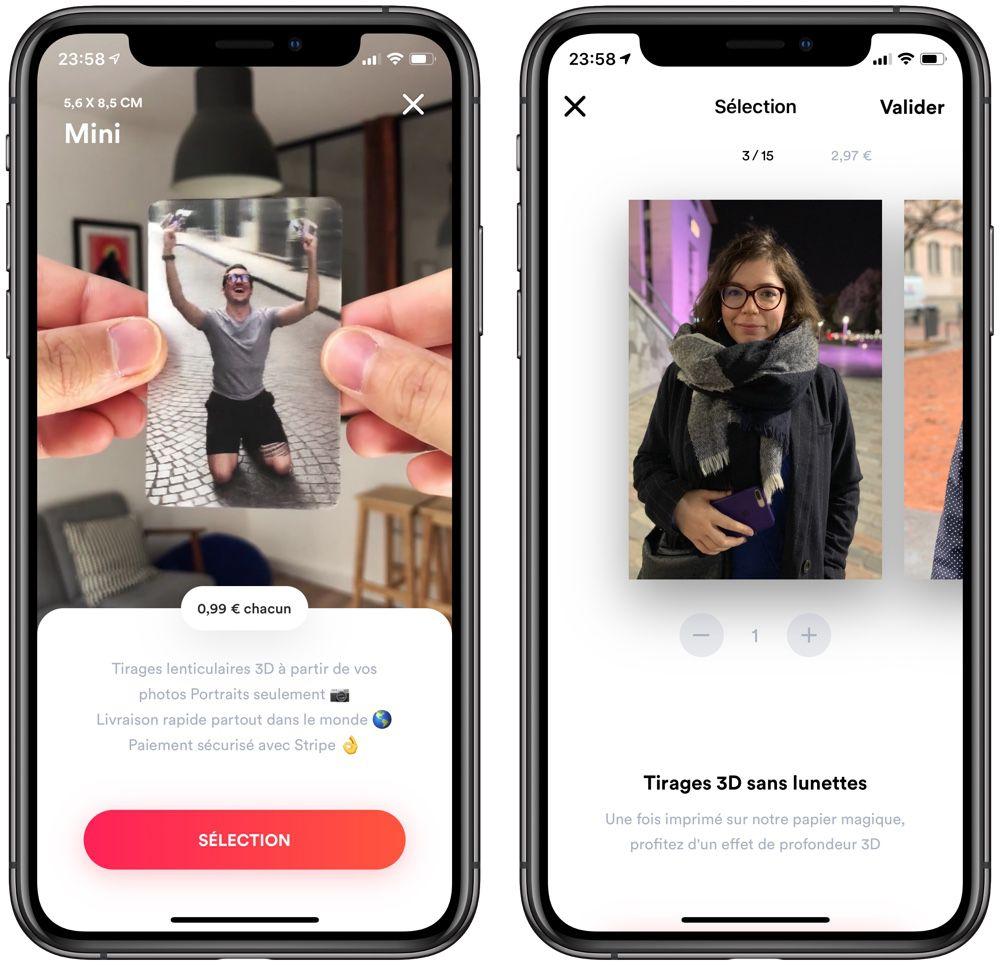Pops, Video and 3D Prints of Live Photos and Portrait Mode Snapshots | iGeneration
Since their inception, Live Photos have amazed me as much as they frustrate me; their magic vanishes as soon as they leave the Apple ecosystem. We can convert these animated photos into GIFs, it's true, but basically, what bothers me the most is that we can't print them. How do I share them with my grandparents who don't have a smartphone, tablet or computer (don't tell me when buying an iPhone)? Beyond that, how to ensure their sustainability?
And pop! Suddenly, I discovered Pops, a French service that makes “video prints” of Live Photos, as well as Snaps, Boomerangs and other very brief clips.
Video prints (Live Photos)
The term "video" is a bit far-fetched, the start-up hasn't revolutionized printing by putting down a real video on paper, but it gives a small idea of the result. By slightly moving the photo up and down, it becomes animated. The printed photos thus become Live Photos again.
To achieve this effect, Pops exploits an old technique, lenticular printing. “The idea is to interlace images together, then print the interlaced image on the back of semi-cylindrical lenses. The convexity of the lens then makes it possible to display a single image, and to switch from one image to another when the lenticular support is moved, which creates the effect of movement or 3D depth", explains Paul-Antoine Campos, the founder of the service launched in 2016.
The technique has its limits, you cannot "print" an entire Live Photo. It is in the Pops application on the iPhone that the selection of the one-second extract (it is long enough to keep the interest of the thing) takes place.

In the absence of being able to simulate the video draw in the application - it is a function that gives a hard time to the small team - it indicates possible problems, such as a video in the wrong orientation or forgetting to extract selection. The video prints are available in two sizes: mini (6 x 11 cm) at €0.99 each and classic (10 x 14.5 cm) at €2.49 each. It's much more expensive than a traditional 10 x 15 print, we agree, but it's also much more original.
The printing technique means that the image is not as sharp as on a traditional print. The surface of the print is finely grooved to allow the effect of movement. You have to be aware of this before placing an order: rather choose photos with simple composition and where the animation is clear. Otherwise, the effect can be quite messy.
3D prints (Portrait mode)
Pops also offers “3D prints” dedicated to photos taken in Portrait mode. Lenticular printing is still at work, but it is used here to create an effect of depth (in this mode the iPhone indeed distinguishes several planes), while maintaining the blur in the background.
Without being as precise as traditional prints (there is a slight grain effect), 3D prints are sharper than video prints. The quality of the static image is quite satisfactory at a normal distance. As for the depth effect, it is indeed present, but to varying degrees. From striking on some shots, where the subject is as if on the surface of the print while the background really appears set back, it is more anecdotal on others. The prices are the same as the video prints, and there is also an 18.5 x 29 cm format at €16.99.
Of the seven 3D prints ordered for this article, three feature a small smudge effect next to sleeves or hair. It doesn't spoil the entire photo, but once you notice it, it's a flaw that stains. “To create 3D we have to recreate what is behind the objects in the image. Our image completion algorithm is constantly being improved and it may happen that there is this phenomenon of images that “drool”,” says Paul-Antoine Campos, who promises an update to the algorithm very soon. correcting that.
The Parisian start-up is also working on a major update of the iPhone application, a must for ordering, which will improve several critical points. This will be the case for the connection stage, which will be better integrated into the customer journey (you must currently connect or create an account as soon as you open the app), as well as the shopping cart, which will allow finally to order different types of prints at the same time (yes, you have to make separate orders right now if you want video and 3D prints, and therefore pay twice the shipping costs). There are also many bugs to fix, although things have improved since my first try in early December. An Android version is also planned for the near future.
Whether in terms of printing or application, Pops' room for improvement is therefore quite significant. Despite these reservations, I recommend the service – which is not unique, but which is apparently the most accessible and the best designed. If in doubt, you can always order a handful of photos just to judge for yourself.
I tried it at Christmas: the video and 3D prints are having an effect. They surprised and amused the people for whom they were intended, and attracted the curiosity of others. What you lose in pure print quality, you gain in fun. That's all that makes Pops honey.



![PAU - [ Altern@tives-P@loises ] PAU - [ Altern@tives-P@loises ]](http://website-google-hk.oss-cn-hongkong.aliyuncs.com/drawing/179/2022-3-2/21584.jpeg)

![Good deal: 15% bonus credit on App Store cards of €25 and more [completed] 🆕 | iGeneration Good deal: 15% bonus credit on App Store cards of €25 and more [completed] 🆕 | iGeneration](http://website-google-hk.oss-cn-hongkong.aliyuncs.com/drawing/179/2022-3-2/21870.jpeg)





Related Articles